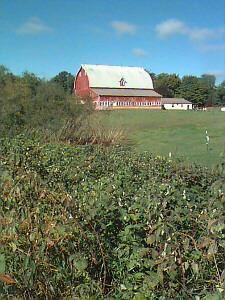Congressional district 4th Website www.osceola-county.org Founded 1 April 1840 Unemployment rate 6.3% (Apr 2015) | Area 1,484 km² Population 23,259 (2013) | |
 | ||
Rivers Muskegon River, Pine River, Atkinson Creek | ||
Osceola County is a county located in the U.S. state of Michigan. At the 2010 census, the population was 23,528. The county seat is Reed City.
Contents
- Map of Osceola County MI USA
- History
- Geography
- Major highways
- Adjacent counties
- Demographics
- Government
- Elected officials
- Cities
- Villages
- Unincorporated community
- References
Map of Osceola County, MI, USA
History
Osceola County was created by the Michigan Legislature on April 1, 1840, named Unwattin County, after an Ottawa leader. The name was changed March 8, 1843, to Osceola, after the Seminole leader. It was initially attached for administrative purposes to Ottawa County. In 1855, it was attached to Mason County; in 1857, to Newaygo County; and in 1859, to Mecosta County. Separate county government was organized in 1869 with Hersey as the county seat. Reed City became the county seat in 1927.
Geography
According to the U.S. Census Bureau, the county has a total area of 573 square miles (1,480 km2), of which 566 square miles (1,470 km2) is land and 6.7 square miles (17 km2) (6.7%) is water. The county is drained by Muskegon River and branches of the Manistee River. The surface is level. Osceola County is part of Northern Michigan.
Major highways
Bus. US 10
Adjacent counties
Demographics
At the 2000 census, there were 23,197 people, 8,861 households and 6,415 families residing in the county. The population density was 41 per square mile (16/km²). There were 12,853 housing units at an average density of 23 per square mile (9/km²). The racial makeup of the county was 97.51% White, 0.35% Black or African American, 0.50% Native American, 0.22% Asian, 0.02% Pacific Islander, 0.20% from other races, and 1.21% from two or more races. 0.99% of the population were Hispanic or Latino of any race. 26.0% were of German, 11.9% English, 11.0% American, 8.8% Irish, 6.5% Dutch and 5.2% Polish ancestry according to Census 2000. 96.8% spoke English, 1.1% German and 1.0% Spanish as their first language.
There were 8,861 households of which 32.90% had children under the age of 18 living with them, 58.10% were married couples living together, 9.70% had a female householder with no husband present, and 27.60% were non-families. 22.60% of all households were made up of individuals and 9.80% had someone living alone who was 65 years of age or older. The average household size was 2.58 and the average family size was 3.01.
27.10% of the population were under the age of 18, 8.00% from 18 to 24, 26.50% from 25 to 44, 24.20% from 45 to 64, and 14.20% who were 65 years of age or older. The median age was 38 years. For every 100 females there were 97.70 males. For every 100 females age 18 and over, there were 94.70 males.
The median household income was $34,102 and the median family income was $39,205. Males had a median income of $29,837 compared with $22,278 for females. The per capita income for the county was $15,632. About 9.50% of families and 12.70% of the population were below the poverty line, including 15.90% of those under age 18 and 10.30% of those age 65 or over.
Government
The county government operates the jail, maintains rural roads, operates the major local courts, keeps files of deeds and mortgages, maintains vital records, administers public health regulations, and participates with the state in the provision of welfare and other social services. The county board of commissioners controls the budget but has only limited authority to make laws or ordinances. In Michigan, most local government functions — police and fire, building and zoning, tax assessment, street maintenance, etc. — are the responsibility of individual cities and townships.
Elected officials
(information as of January 2009)
